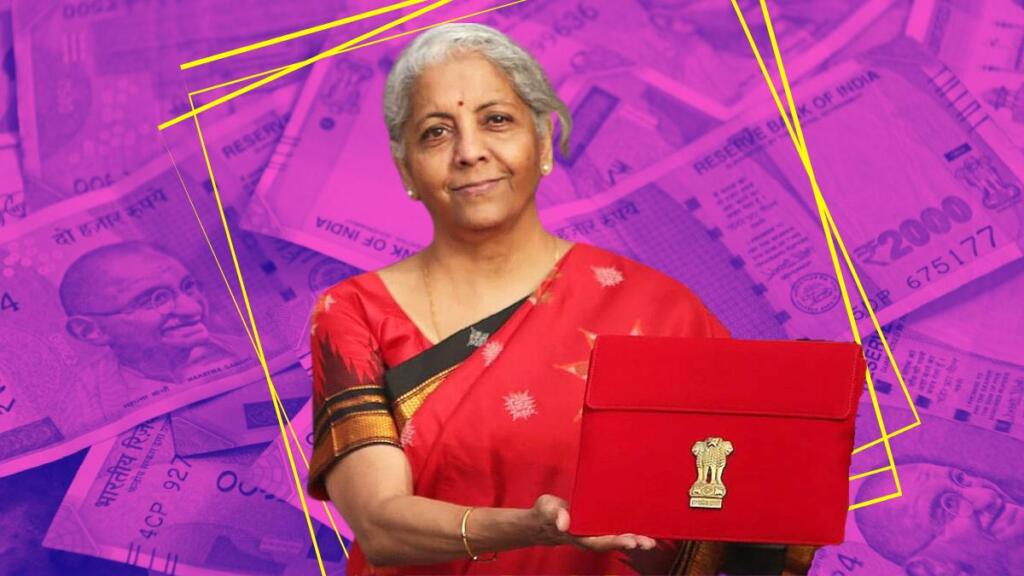On July 30, Finance Minister Nirmala Sitharaman addressed the Lok Sabha, countering criticisms from Opposition leaders about the Budget 2024-25. Here are the key points from her speech:
Capital Expenditure: Sitharaman’s Emphasis
Finance Minister Sitharaman highlighted the significant role of capital expenditure in driving economic recovery post-COVID. She noted that out of the total expenditure of Rs 48.2 lakh crore, Rs 11.1 lakh crore is allocated to capital projects.
Sitharaman emphasized that the budgeted capital expenditure is now approximately 3.3 times higher than in 2019-20. When considering effective capital expenditure, the amount stands at Rs 15.02 lakh crore, exceeding 18 percent of the Revised Estimates for 2023-24.
Expenditure in Various Sectors
Agriculture and Education: Sitharaman pointed out a substantial increase in expenditure for agriculture and allied sectors from Rs 0.3 lakh crore in 2013-14 to Rs 1.2 lakh crore. This figure is Rs 8,000 crore more than the previous year. Similarly, spending on education, employment, and skill development has risen from Rs 0.85 lakh crore in 2013-14 to Rs 1.48 lakh crore, reflecting a 23 percent increase.
Women and Girls: In 2013-14, Rs 0.96 lakh crore was spent on women and girls, which has now increased to Rs 3.27 lakh crore. Sitharaman also noted the enhanced funding for rural and urban development.
Fiscal Deficit and Jammu-Kashmir Funding
Sitharaman assured that the government aims to reduce the fiscal deficit below 4.5 percent of GDP by 2025-26, down from a peak of 9.2 percent in 2020-21.
Regarding Jammu and Kashmir, Sitharaman revealed that the Union Budget includes Rs 17,000 crore, with Rs 12,000 crore allocated specifically for the Jammu and Kashmir Police to boost development spending. She noted improvements in self-employment opportunities and government support in the region, alongside ongoing efforts for tribal communities.
State Distribution and Specific Allocations
State Funding: Sitharaman addressed concerns about budget allocations, stating that the absence of a state’s name in the budget speech does not mean it will not receive funds. She criticized the Opposition for misleading claims, providing examples such as Bulk Drug Parks in Himachal Pradesh and the PM Mitra Textile Park in Tamil Nadu, Karnataka, and Telangana.
Kerala: In response to Kerala MPs’ claims of inadequate funding, Sitharaman highlighted a major highway project worth Rs 9,667 crore for NH 66 in Thrissur and Rs 1,148 crore for the Mukola junction near the Tamil Nadu border.
Adani Port and Agriculture Funding
Adani Port: Sitharaman defended the Union government’s support for the Vizhinjam port, including Rs 818 crore for the project’s viability gap. She criticized Congress for inviting Adani and not questioning the project earlier.
Agricultural Support: Sitharaman detailed that Rs 3.24 lakh crore has been allocated under the PM Kisan Samman Nidhi for 11 crore farmers, with institutional credit targets for agriculture increasing over 2.5 times. The percentage of small and marginal farmers receiving subsidized loans has also risen from 57 percent in 2014 to 76 percent.
Minimum Support Price (MSP) and Employment
MSP: Sitharaman criticized the previous UPA government for not implementing the Swaminathan Commission’s 2006 recommendation to set MSP at 50 percent above production costs. She also highlighted the irregularities found by the CAG in the 2009 farmer debt waiver scheme.
Employment: She contrasted the UPA era’s decline in employment with the current government’s achievements, noting an increase in labor force participation and a decrease in the unemployment rate to 3.2 percent for 2022-23.
Inflation, Allocations for SC, ST, and Women
Inflation: Sitharaman discussed high inflation during the UPA era and claimed that current inflation is significantly lower than the global average. She attributed the lower inflation rates partly to BJP states reducing fuel prices.
Allocations: Sitharaman noted increased allocations for SC, ST, and women. For instance, funding for SC has risen from Rs 1.59 lakh crore to Rs 1.65 lakh crore, while allocations for ST increased from Rs 1.19 lakh crore to Rs 1.24 lakh crore, and for women from Rs 2.38 lakh crore to Rs 3.27 lakh crore.
Skill India Mission and Global Hunger Index
Skill India Mission: Sitharaman praised the growth in employability among Indian youth, from 34 percent in 2014 to 51 percent in 2024, and India’s improvement in the World Skills competition rankings from 19th to 11th position.
Global Hunger Index: Sitharaman questioned India’s ranking compared to countries like Pakistan and Sudan, despite significant efforts to distribute free rations to 80 crore people.
Household Savings, Budget Transparency, and Minorities
Household Savings: Sitharaman noted a 70 percent increase in net financial savings, with a shift from financial to physical assets.
Budget Transparency: She emphasized improved fiscal management under PM Modi, contrasting it with the UPA’s off-budget borrowings and oil bonds.
Minorities: Sitharaman mentioned that the budget for minorities has increased to Rs 85 crore more than the previous year.
Critique of Opposition and Tradition
Opposition Critique: Sitharaman criticized the Opposition’s narrative against entrepreneurship and questioned their focus on ceremonial aspects of budget printing, like the Halwa ceremony.
Tradition: She explained the tradition of the Halwa ceremony, highlighting its role in celebrating the start of the budget printing process, and questioned why it had become a point of contention.
Historical References: Sitharaman also referenced historical figures like Jawaharlal Nehru and Indira Gandhi to critique past policies on reservations and SC, ST representation.
ALSO READ: Amendments To Anti-Conversion Law Passed in Uttar Pradesh
